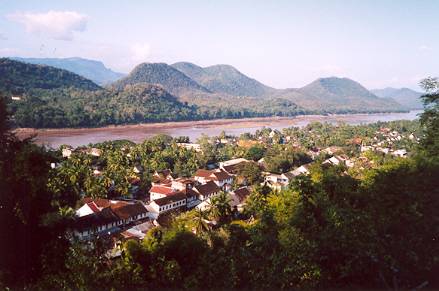
Luang Prabang from Phu Si

Luang Prabang from Phu Si
Exploring Luang Prabang with Bill and Bessie Too
Luang Prabang, Lao PDR
13 January 2003
The days have been just packed with a palace, temples, caves, and waterfalls in and around this palm-shaded little town! Yes, I've enjoyed Luang Prabang very much. It's really a group of villages, each named for a local temple. And there are lots of temples, all decorated inside and out with beautiful artistry. I also walked through the Royal Palace Museum, a plain double cruciform building on the outside, but filled with royal and religious art inside. The most famous Buddha statue, the Pha Bang, stands in the palace shrine room. The Khmer Empire presented the gold-silver-bronze-alloy image to King Fa Ngum in 1359 as a confirmation of Lao sovereignty. The capital later changed its name in honor of this statue—Luang Prabang is "Great (or Royal) Pha Bang." Out back rest four of the royal cars, including the one used exclusively by the king and queen—a big old Edsel!
Yesterday I cycled southwest 32 km to Kuang Si Waterfall, a beautiful spot in forested foothills. Twin falls cascade into travertine pools filled with turquoise-colored water. I hiked up one side of the falls, waded across pools at the top, then descended on the other side. A walk downstream passed many more travertine pools with water pouring over their rims.
Film has been flying through my camera in the five days here, so I'll be posting plenty on my website when we return to the USA next month! Today I leave for Pak Mong, a road junction north of here. It's a 117-km ride—hope I make it!
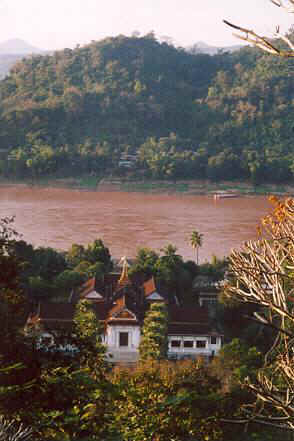
The Royal Palace from Phu Si
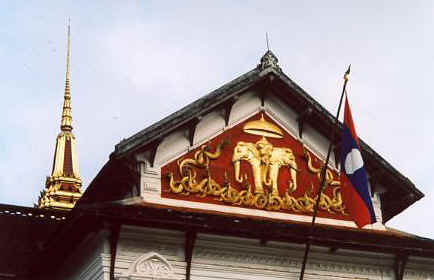
Detail of the Royal Palace, built in 1904 during the early French colonial period
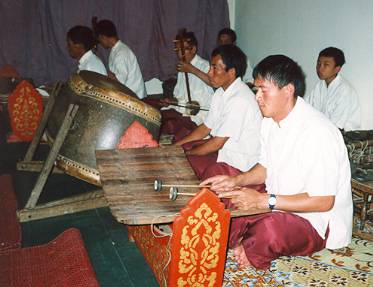 A
traditional Lao orchestra
A
traditional Lao orchestra
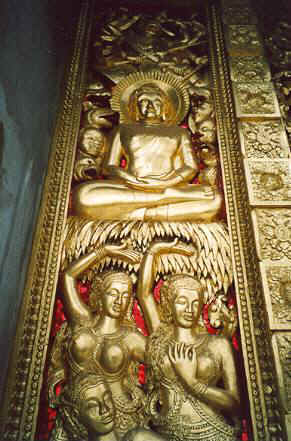 That's
real gold! Workmen had just applied gold leaf to this
That's
real gold! Workmen had just applied gold leaf to this
wood-carved door of the Haw
Pha Bang, a temple on the grounds of the Royal
Palace; when construction is complete,
the Pha Bang statue will be moved inside.
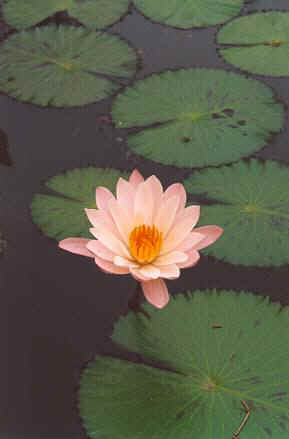 water
lily at the Royal Palace
water
lily at the Royal Palace
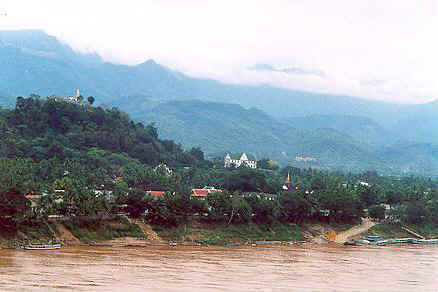
Luang Prabang waterfront. You can see the stupa atop Phu Si hill on the left,
red temple roofs, and the gold spire of the Royal Palace in the middle right.
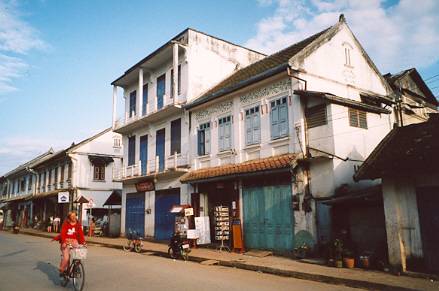
Thanon Sisavangvong, Luang Prabang's main street.
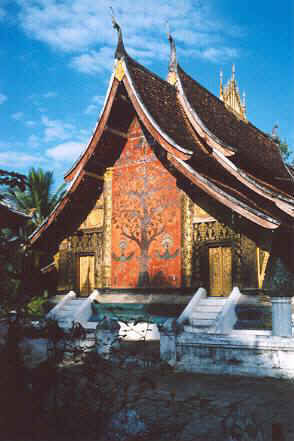
A Tree of Life mosaic adorns the back of the temple at Wat Xieng Thong.
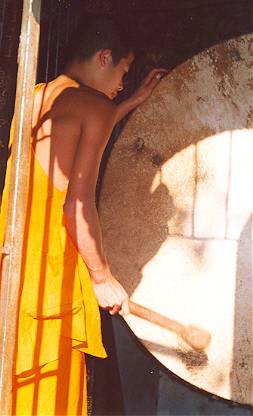 Beating
the drum at Wat Xieng Thong
Beating
the drum at Wat Xieng Thong
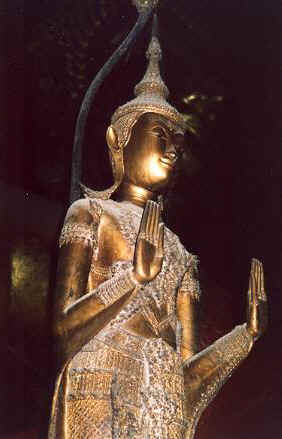 Buddha
giving protection, Wat Wisunalat
Buddha
giving protection, Wat Wisunalat
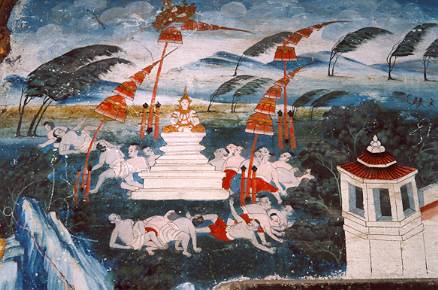
Painting inside 18th-century Wat Long Khun,
located across the Mekong from Luang
Prabang.
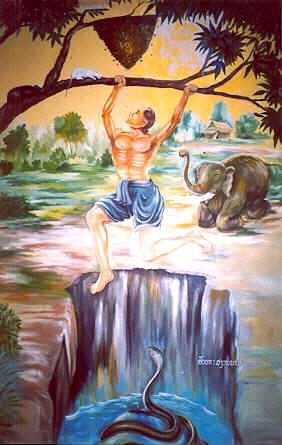 Yes,
this guy is in serious trouble!
Yes,
this guy is in serious trouble!
The painting illustrates the human tendency
to blindly follow cravings without
regard to the dangers involved. Rodents gnawing
the branch symbolize the
certainty of death and the futility of devoting one's life
to short-lived pleasures.
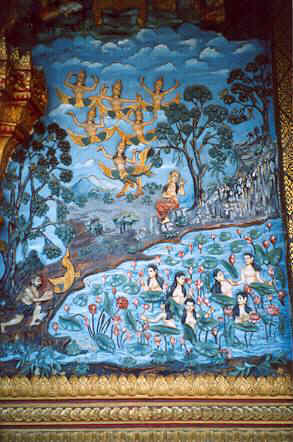 Detail
of a door to Wat Pha Mahathat
Detail
of a door to Wat Pha Mahathat
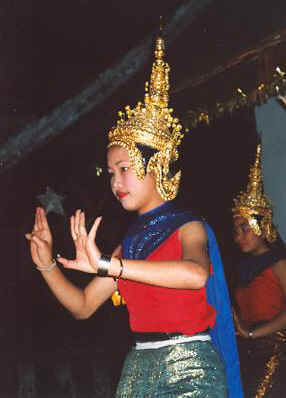
Cultural show at Villa Sinxay;
Family and friends of this restaurant put on
a good performance.
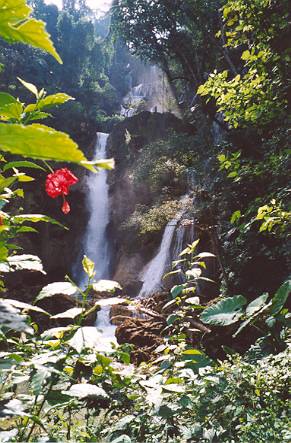 The
many-tiered Tat Kuang Si Waterfall
The
many-tiered Tat Kuang Si Waterfall
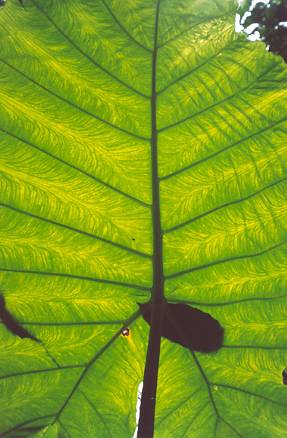 The
underside of a giant leaf
The
underside of a giant leaf
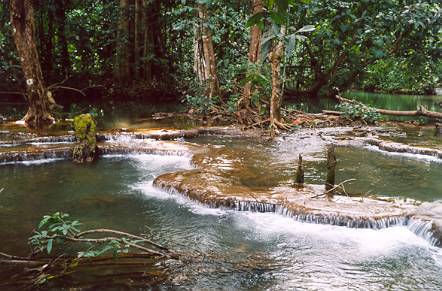
Travertine pools just above Tat Kuang Si Waterfall
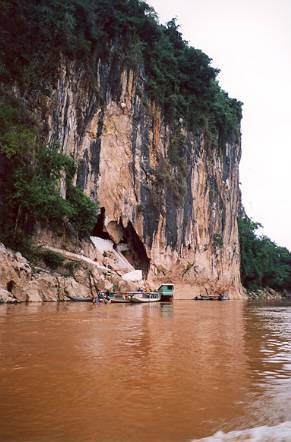 Pak
Ou Caves.
Pak
Ou Caves.
The white staircase leads into the large, Buddha-filled chamber of
the lower cave.
|
|
|
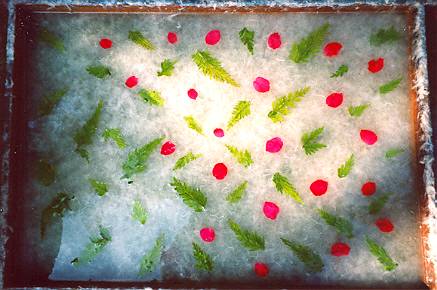
On the way back from Pak Ou, our boat stopped at a crafts village.
Can you guess
what they are making here?
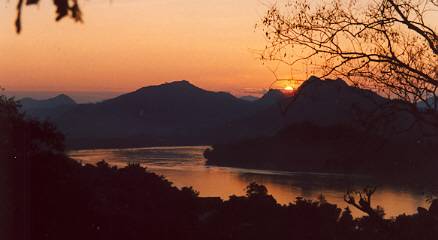
Day's end at Luang Prabang